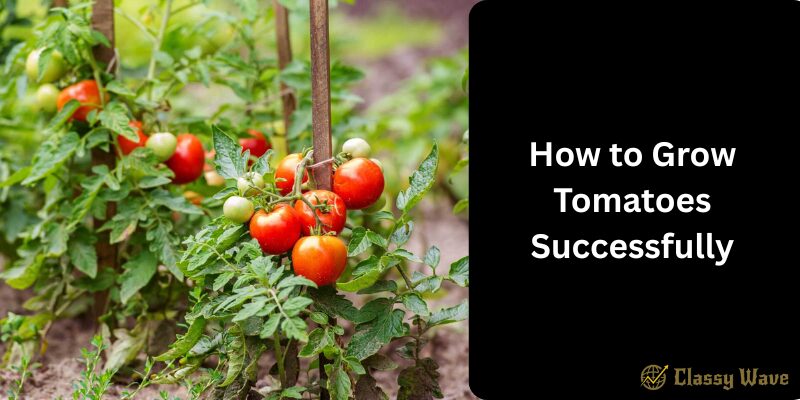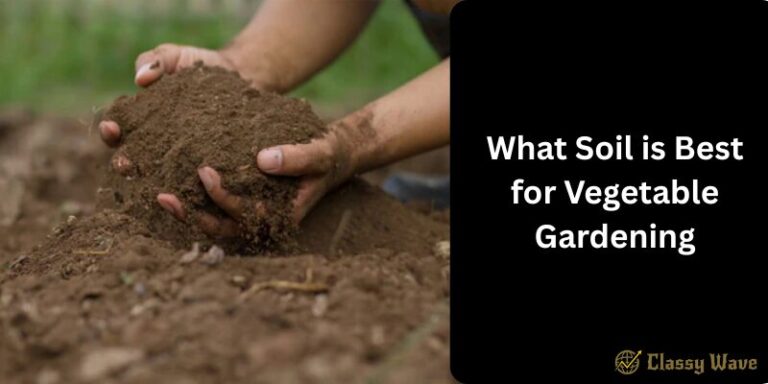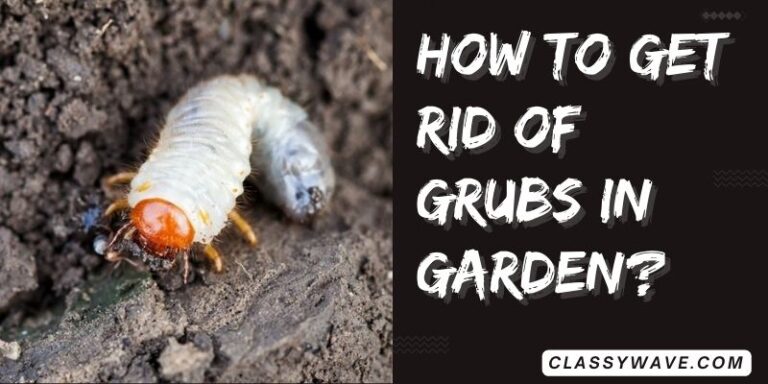How to Grow Tomatoes Successfully | Classy Wave
Tomatoes are one of the most popular and rewarding plants to grow at home. They’re versatile, flavorful, and can be grown in gardens, pots, or even indoors with the right care. But growing tomatoes successfully requires more than just planting seeds — it takes attention to soil, sunlight, watering, and maintenance. In this guide, we’ll walk you through every step to ensure your tomato plants thrive and produce juicy, delicious fruits.
Choosing the Right Tomato Variety
The first step to success is selecting the right type of tomato. There are hundreds of varieties, but they fall into two main categories:
- Determinate (Bush) Tomatoes: These grow to a fixed height and produce all their fruit at once — great for small gardens or containers.
- Indeterminate (Vining) Tomatoes: These keep growing and producing fruit throughout the season — perfect for gardeners who want a long harvest.
Popular beginner-friendly varieties include Cherry Tomatoes, Roma, and Beefsteak.
Finding the Perfect Location
Tomatoes love the sun! Choose a spot that gets at least 6 to 8 hours of direct sunlight each day. The more sunlight, the better the flavor and yield of your tomatoes. If you’re growing indoors, use grow lights to mimic natural sunlight.
Preparing the Soil
Healthy soil is key to growing strong tomato plants. Tomatoes prefer well-drained, slightly acidic soil with a pH between 6.0 and 6.8.
To improve soil quality:
- Mix compost or organic matter into the soil.
- Add a small amount of aged manure for extra nutrients.
- Avoid compacted or waterlogged soil — tomatoes hate wet feet!
If you’re using containers, choose large pots (at least 18 inches deep) with good drainage holes.
Planting Tomatoes the Right Way
Planting depth is crucial for strong root growth. When transplanting seedlings:
- Remove the lower leaves from the stem.
- Bury two-thirds of the plant into the soil — new roots will grow along the buried stem.
- Space each plant 18–24 inches apart to allow proper airflow.
Planting deep helps your tomatoes develop strong roots that support better growth and higher yields.
Watering the Right Way
Tomatoes need consistent moisture, but not too much!
- Water deeply once or twice a week, depending on the weather.
- Avoid watering the leaves — water the soil directly at the base.
- Early morning watering is ideal to let excess moisture evaporate during the day.
Inconsistent watering can lead to problems like cracked fruit or blossom-end rot.
Feeding and Fertilizing
Tomatoes are heavy feeders and need a nutrient boost to grow well.
- Use a balanced fertilizer (like 10-10-10) or an organic tomato fertilizer.
- Apply compost or liquid seaweed fertilizer every 2–3 weeks.
- Avoid over-fertilizing with nitrogen — it causes too many leaves and fewer fruits.
A slow-release organic fertilizer is often the easiest option for beginners.
Supporting Your Tomato Plants
As tomato plants grow, they become heavy with fruit and need support.
Use one of these methods:
- Tomato cages for bush types.
- Stakes or trellises for vining varieties.
Tie the stems loosely with soft fabric or garden ties to prevent damage.
Pruning for Better Growth
Pruning helps your plant focus energy on producing fruit instead of excess leaves.
- Remove suckers (small shoots that grow between the main stem and branches).
- Trim off yellow or dead leaves regularly.
- Keep the bottom 10–12 inches of the plant leaf-free to improve airflow and prevent disease.
Mulching and Weed Control
Add a layer of organic mulch (like straw, compost, or grass clippings) around your plants to:
- Retain moisture
- Prevent weeds
- Keep soil temperature stable
- Reduce splashback that can cause disease
Mulching also gives your garden a neat and tidy look.
Preventing Pests and Diseases
Common tomato pests include aphids, whiteflies, and caterpillars. Keep them away by:
- Using neem oil spray or insecticidal soap.
- Planting companion plants like basil, marigold, or garlic nearby — they naturally repel pests.
To avoid diseases like blight and leaf spot, water at the base, not on the leaves, and ensure good air circulation.
Pollination Tips
Tomatoes are self-pollinating, but a little help can increase fruit production.
If you’re growing indoors, gently shake the plant or use a small brush to transfer pollen between flowers. Outdoors, bees usually handle this job naturally.
Harvesting Tomatoes
When the fruits are firm and evenly colored, they’re ready to pick.
- Gently twist the tomato until it comes off easily.
- For continuous harvest, check plants daily during peak season.
- Slightly green tomatoes can ripen indoors in a warm, dry spot.
The more you pick, the more your plant will produce!
Common Tomato Growing Problems and Fixes
- Yellow Leaves: Often caused by overwatering or nutrient deficiency.
- Blossom-End Rot: Irregular watering or lack of calcium — use crushed eggshells or calcium spray.
- Cracked Fruit: Caused by sudden rain after dry spells — maintain consistent moisture.
- No Fruit: Too much nitrogen or high heat can affect pollination — adjust fertilizer and provide shade if needed.
Conclusion
Growing tomatoes successfully is all about consistency — consistent watering, feeding, and sunlight. With a little patience and care, you can enjoy a bountiful harvest of fresh, flavorful tomatoes straight from your garden. Whether you’re growing in pots, raised beds, or a small backyard, these tips will help you become a tomato-growing pro in no time!







